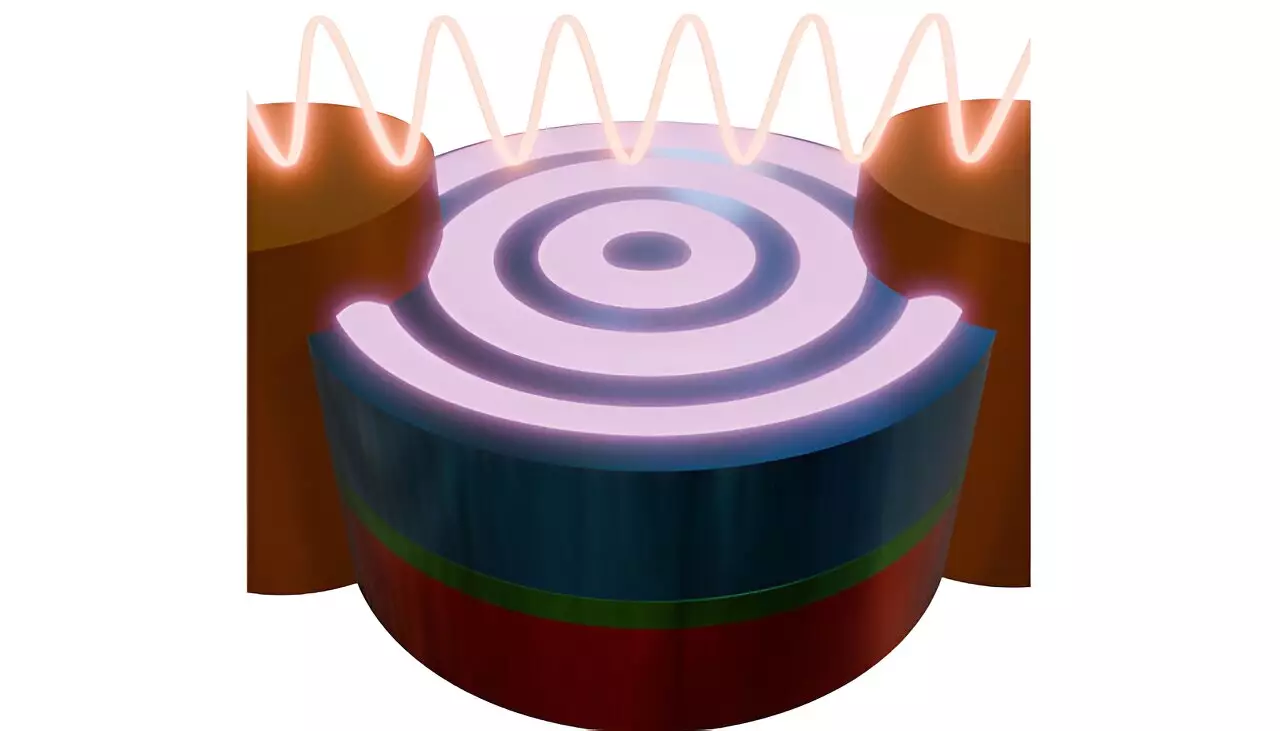In a groundbreaking collaboration between researchers from the University of Vienna, the Max Planck Institute for Intelligent Systems in Stuttgart, and the Helmholtz Centers in Berlin and Dresden, a transformative study has been published in *Science Advances*. This research marks a crucial advancement in the ongoing quest to miniaturize computing devices and enhance their energy efficiency. By exploring the realms of magnonic circuits—electronic circuits that utilize spin waves—the study proposes a radical shift from traditional computing architectures, offering exciting possibilities for the future of technology.
Modern computing heavily relies on transistors made from complementary metal oxide semiconductors (CMOS), which power everything from smartphones to complex computer systems. However, as demand for smaller and more efficient devices grows, the limitations of conventional technologies are becoming increasingly evident. Issues such as high power consumption and energy loss pose significant challenges. As scientists grapple with these concerns, the need for alternative architectures is becoming more pressing. Magnons—essentially quanta of spin waves—have emerged as a compelling candidate to address these challenges and potentially revolutionize computing.
To contextualize spin waves, consider the analogy of a stone thrown into a calm lake, generating ripples that expand outward. If we swap the lake for a magnetic material and the stone for an antenna, the resulting spin waves travel through the magnetic medium, facilitating the transfer of energy and information with minimal loss. According to Sabri Koraltan, a researcher at the University of Vienna, this wave propagation can lead to the development of magnonic devices capable of fulfilling both typical computing tasks and unconventional operations.
Creating efficient and short-wavelength spin waves has been a significant roadblock. Traditional methods utilizing nano antennas, constructed in specialized clean rooms through advanced lithography techniques, have proved limited in their capacity. Yet, the collaborative research team has unveiled a simpler approach. By directing electric current through a magnetic stack featuring swirling magnetic patterns, the researchers have markedly improved spin-wave emission efficiency, bypassing the constraints associated with conventional methods.
Diving deeper, the researchers utilized lateral alternating current geometry within synthetic ferrimagnetic vortex pairs. This innovative configuration enables the opposing magnetization patterns in synthetic systems to excite magnetization more efficiently through the magnetic fields generated by the alternating currents. Sebastian Wintz, a coordinator for the research project, highlighted this significant advance and its capacity to change the landscape of spin-wave generation.
Employing high-resolution X-ray microscopy at the BESSY II synchrotron in Berlin, the researchers successfully observed the predicted spin waves at nanoscale wavelengths and gigahertz frequencies. This level of precision illustrates the effectiveness of their approach and affirms its potential applications in advanced computing technologies. Furthermore, by integrating specific materials that alter their magnetization under strain, the team demonstrated dynamic control over spin wave direction simply by varying the current’s magnitude. This ability to steer spin waves signifies a leap toward active magnonic devices that could redefine how computing systems operate.
The research team’s innovative micromagnetic simulation software, magnum.np, was instrumental in understanding the mechanisms behind effective and controllable spin-wave excitation. The implications of being able to redirect spin waves on demand are profound, paving the way for the development of reprogrammable magnonic circuits. These circuits promise not only greater adaptability in computing systems but also significantly improved energy efficiency—qualities that are critical in our increasingly digital world.
The published findings are a harbinger of a new era in computing, forging pathways toward next-generation, magnon-based technologies. By leveraging spin waves, researchers are poised to redefine what is possible in the realm of energy-efficient computing. This study’s collaborative spirit and innovative findings exemplify the strides being made in the field and hold promise for a future where computing devices are not only smarter but also sustainably designed, addressing the exponential demand for advanced technological solutions.


Leave a Reply